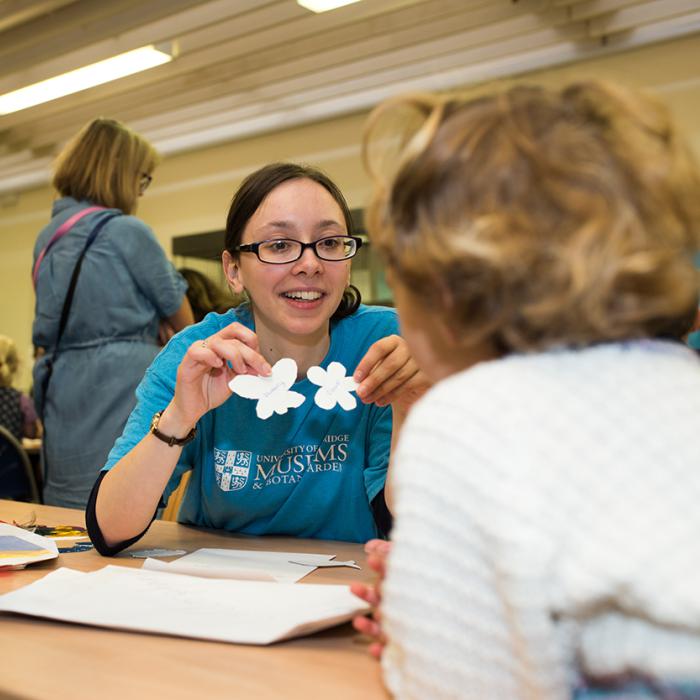During their residency at Kettle’s Yard as part of 20/20, Faramawy has been exploring the dynamics of hospitality by examining the relationship between the roles of host and guest.
Explore the special species, traditions and atmospheres of a landscape shaped by water, steeped in history and shrouded in mystery in this talk about the flora and folklore of Fenlands, covering subjects from herbal remedies to thatching, celebrating Cambridgeshire botany.
Inspired by 'William Blake’s Universe', take part in a hands-on workshop led by artist and spatial designer Sahra Hersi, exploring universal themes of place and identity through a lens of repair, imagination, hope and innovation. Aimed at 15-25 year olds. Includes a visit to the exhibition.
Image: Detail of William Blake, Albion rose… (“Glad Day” or “The Dance of Albion”), 1794-6 © The Trustees of the British Museum.
During the session participants will:
Unlock your creativity at Kettle's Yard's free, artist-led workshops for families in the Clore Learning Studio.
Get hands-on with creative activities inspired by artworks and ideas at Kettle’s Yard.
No art experience needed — our friendly artists and volunteers will support you step-by-step. Children and adults of all ages are welcome to participate but Studio Sunday is most suitable for children between 3–11 years.
Kettle's Yard invites families with children who have additional sensory needs to join us for our Studio Sunday Relaxed Session. These quieter art making workshops aim to provide a comfortable creative experience at Kettle’s Yard.
In our Clore Learning Studio, participants can make art inspired by artworks and ideas at Kettle’s Yard, supported by artists and volunteers. No prior art experience is required.
Activities are designed for children ages 3–11 and we encourage parents and carers to create alongside their child.
Unlock your creativity at Kettle's Yard's free, artist-led workshops for families in the Clore Learning Studio.
Get hands-on with creative activities inspired by artworks and ideas at Kettle’s Yard.
No art experience needed — our friendly artists and volunteers will support you step-by-step. Children and adults of all ages are welcome to participate but Studio Sunday is most suitable for children between 3–11 years.
Kettle's Yard invites families with children who have additional sensory needs to join us for our Studio Sunday Relaxed Session. These quieter art making workshops aim to provide a comfortable creative experience at Kettle’s Yard.
In our Clore Learning Studio, participants can make art inspired by artworks and ideas at Kettle’s Yard, supported by artists and volunteers. No prior art experience is required.
Activities are designed for children ages 3–11 and we encourage parents and carers to create alongside their child.
From exploring herbarium uses to discovering the secrets of wildflowers and fungi, come and discover the fascinating world of plant science in just 30 minutes! Science on Sundays is a free, informal and monthly series of talks, sharing the latest discoveries in plant science and research with our visitors.
From exploring herbarium uses to discovering the secrets of wildflowers and fungi, come and discover the fascinating world of plant science in just 30 minutes! Science on Sundays is a free, informal and monthly series of talks, sharing the latest discoveries in plant science and research with our visitors.

